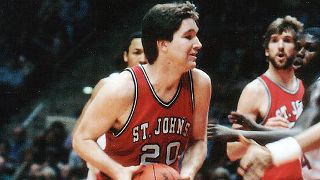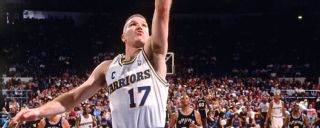Chris Mullin and Bobby Hurley had two of the last teams picked for the 2019 NCAA tournament field. But they would have been among the earliest selected in a pickup game of this year's tournament coaches.
Mullin (St. John's) and Hurley (Arizona State), who will face off Wednesday night when their teams meet in the First Four, are the rare coaches in the field who were household names before they ever walked a collegiate sideline. The highest level of basketball reached by the head coaches in the 2019 field of 68 breaks down like this:
NBA (regular-season roster): 4
Other professional leagues: 11
Division I college basketball: 18
Lower NCAA levels, NAIA, junior college: 23
High School (varsity roster): 10
No varsity high school experience: 2
What should we conclude from this breakdown? Probably nothing. You can get to the NCAA tournament without being a standout player. But we thought it would be fun to dive into their playing backgrounds, so we ranked 'em (in a mostly unscientific manner, mind you) for your review:
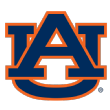
68. Bruce Pearl, Auburn Tigers -- Pearl did not play basketball at Sharon (Massachusetts) High School, as an injury suffered playing football during his freshman year prevented him from pursuing athletics. Pearl's path to coaching came after he was hired as a student assistant at Boston College under Dr. Tom Davis, and was later added to Davis' coaching staff at Stanford.

67. Scott Drew, Baylor Bears -- Drew's playing days ended with the JV team at Valparaiso (Indiana) High School. Though his brother, Bryce, played in the NBA, Scott Drew was a tennis player (he played on the team but didn't letter) and basketball manager at Butler.

66. Richard Pitino, Minnesota Golden Gophers -- Pitino's playing career concluded at the high school level -- he served as a point guard for Saint Sebastian's School in Needham, Massachusetts, while his father, Rick, was coaching the Celtics. The younger Pitino did not play college basketball, serving as a student manager at Providence under then-coach Tim Welsh.

65. Bruce Weber, Kansas State Wildcats -- Weber played basketball through his senior year at John Marshall High School in Milwaukee but did not play sports as a collegian at Wisconsin-Milwaukee.

64. Chris Beard, Texas Tech Red Raiders -- Beard was a regular for McCullough High School in The Woodlands, Texas, but did not play college basketball at Texas. Then-Longhorns coach Tom Penders gave Beard a managerial job, and he'd eventually become a student assistant at the school.

63. Craig Smith, Utah State Aggies -- Smith played at the high school level for Stephen-Argyle Central High School in Stephen, Minnesota, but did not play collegiately at the University of North Dakota. It was while still a student at UND that Smith met Tim Miles, then the coach at NAIA Mayville State (North Dakota), who helped launch Smith's coaching career by hiring him as an unpaid volunteer assistant.

62. John Becker, Vermont Catamounts -- Becker was a good high school player at Roger Ludlowe High School in Fairfield, Connecticut. Read here about his 35-point game as a senior. Though erroneous information abounds about his post-high school career, Becker did not play intercollegiate basketball at Catholic University, his alma mater.

61. Greg Gard, Wisconsin Badgers -- Gard was a three-sport athlete (including hoops) at Iowa-Grant High in rural Livingston, Wisconsin, but did not play basketball at Wisconsin-Platteville. He did play baseball at UW-Platteville in the 1990s but was cut before his sophomore year.

60. Tim Craft, Gardner-Webb Bulldogs -- Craft did not play basketball at his alma mater, the University of Florida, though he was a manager for the Gators' baseball team. Craft has been quoted as saying that he could have played Division III basketball out of North Florida Christian School in Tallahassee, but the partial scholarship he received for working with the baseball team won out over a continued playing career.

59. Mick Cronin, Cincinnati Bearcats -- Despite his diminutive stature (5-foot-7), Cronin was a good high school point guard under his father, Hep, at Cincinnati's La Salle High. A knee injury was a factor in Cronin's career ending before he reached college at Cincinnati.

58. Mark Few, Gonzaga Bulldogs -- Few led Creswell (Oregon) High to the state's AAA semifinals as a senior point guard. Shoulder problems prevented him from playing at Linfield College, where he intended to play basketball and baseball.

57. Buzz Williams, Virginia Tech Hokies -- Williams played at Van Alstyne (Texas) High School, and told ESPN in 2012 that he could've made the roster at various "Bible colleges" across the country. Williams ultimately did not play basketball at either of his collegiate stops -- Navarro Junior College (Texas) or Oklahoma City University -- but served as a student assistant at both places.
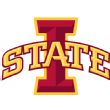
56. Steve Prohm, Iowa State Cyclones -- Prohm was a three-year letterman at Northwest Whitfield High in Tunnel Hill, Georgia -- his claim to fame was hitting a half-court shot to win a game as a senior -- and played briefly at the Division III level at Oglethorpe University in Atlanta. Prohm subsequently transferred to Alabama, where he became a manager and student assistant.

55. Rick Byrd, Belmont Bruins -- Byrd was an honorable mention all-state guard at Doyle High School in Knoxville, and played one season at the junior college level in Florida before transferring to Tennessee and joining the junior varsity team as a senior. While at UT, he became a varsity graduate assistant under head coach Ray Mears, launching his coaching career.

54. David Richman, North Dakota State Bison -- Richman made it as far as the junior college level as a player, participating on a North Dakota State College of Science team that won the NJCAA Region 13 championship in 1998. (Richman's final game was a loss to Shawn Marion and Vincennes in a game that would have sent them to the NJCAA national tournament.) Richman later transferred to NDSU, where he was a student assistant under Ray Giacoletti and Greg McDermott.

53. Bill Coen, Northeastern Huskies -- Coen played four seasons for Division III Hamilton College in Clinton, New York, winning three ECAC championships under longtime coach Tom Murphy (now Northeastern's coordinator of basketball advancement). Murphy once quipped to the Boston Herald that his instructions to Coen as a player were: "Shoot it before you turn it over."

52. Randy Bennett, Saint Mary's Gaels -- Bennett started his career playing under his father, Tom, at Mesa Community College in Arizona (1980-82), then played two seasons as a point guard at Division III UC San Diego (1983-85). Bennett led the Tritons in assists for both of his seasons with the team.
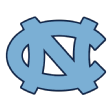
51. Roy Williams, North Carolina Tar Heels -- Williams won all-county, all-conference and all-region honors at T.C. Roberson High School in Asheville, North Carolina, and was a non-scholarship member of North Carolina's freshman team under Bill Guthridge in 1968-69.

50. Mike Young, Wofford Terriers -- Young was a four-year letterman and point guard for Division III Emory & Henry from 1982 to 1986, serving as the Wasps' team captain his junior and senior seasons.
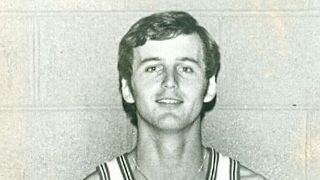

49. Rick Barnes, Tennessee Volunteers -- Barnes served mainly as a reserve guard under head coach Bob Hodges at Division II Lenoir-Rhyne College in Hickory, North Carolina, from 1974 to 1977, never averaging more than three points per game. "He was good, but it didn't translate to games," Barnes' teammate John Lentz told the Dallas Morning News in 1998.

48. Dana Altman, Oregon Ducks -- Altman was a guard and captain at Fairbury Junior College in Nebraska (now known as Southeast Community College) from 1976 to 1978 before transferring to Division II Eastern New Mexico University. Altman has described himself as a "poor player" for the Greyhounds, but he did graduate magna cum laude from the school in 1980.
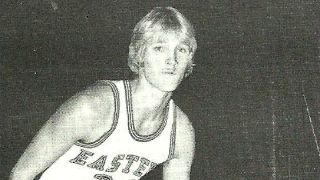

47. Kermit Davis, Ole Miss Rebels -- Davis started his career at Phillips County (Arkansas) Community College before transferring to Mississippi State -- the school that had forced out his father, Kermit Sr., as head coach three years before -- for his final two seasons as a player (1980-82). The younger Davis appeared in just 14 games over his two seasons in Starkville, earning a total of 45 minutes and scoring 12 points while dishing out seven assists.

46. John Beilein, Michigan Wolverines -- Beilein was a backup guard at Division II Wheeling College (now Wheeling Jesuit) from 1971 to 1975, serving as team captain for one year but scoring fewer than 100 career points.

45. Kelvin Sampson, Houston Cougars -- Sampson was a point guard and later a team captain at NAIA Pembroke State (now UNC Pembroke) from 1973 to 1978, and was eventually named to the school's athletics Hall of Fame, alongside his father, Ned. Sampson also earned three collegiate letters as a baseball player at Pembroke.
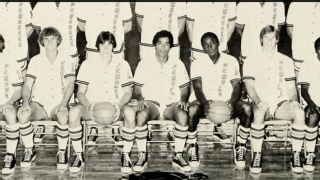

44. James Jones, Yale Bulldogs -- Jones played at then-Division III Albany from 1982 to 1986 and captained the freshman team during his first year on campus.

43. Nate Oats, Buffalo Bulls -- Oats played at D-III Maranatha Baptist University in Watertown, Wisconsin, from 1993 to 1997, serving as a captain and earning all-conference honors.
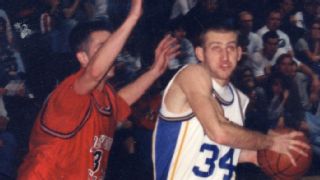

42. Tim Cluess, Iona Gaels -- Like his brothers Kevin, Greg and Hank before him, Tim Cluess -- a 6-foot-6 wing -- would wear a St. John's uniform (recommended reading: Ian O'Connor's brilliant 2011 profile of the triumph and tragedy of the Cluess family). However, injuries contributed to him falling out of the Red Storm rotation. Cluess transferred to College of Charleston and then on to Hofstra, where he saw some time and averaged 2.9 points per game during the 1982-83 season.
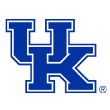
41. John Calipari, Kentucky Wildcats -- Calipari started his career at UNC Wilmington, scoring 29 points during the 1979-80 season before transferring to Division II Clarion, closer to his native Western Pennsylvania. Calipari was a starter at point guard for the Golden Eagles, averaging 5.3 points and 5.3 assists during his senior season.
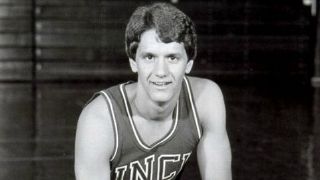

40. Eric Musselman, Nevada Wolf Pack-- Musselman was an undersized reserve guard at the University of San Diego (1983-87), earning limited playing time but appearing in a pair of NCAA tournaments as a player. After graduating, Musselman was a fifth-round draft choice of the CBA Albany Patroons, who were at the time coached by his father, Bill.


39. Tom Izzo, Michigan State Spartans -- Izzo played point guard at Division II Northern Michigan from 1974 to 1977, captaining the team and also winning all-conference and team MVP accolades as a senior.

38. Chris Holtmann, Ohio State Buckeyes -- Holtmann was an NAIA All-American guard at Taylor University in Upland, Indiana, with his best year coming in 1993-94, when he led the Trojans to a 25-9 record, a No. 1 national ranking and a berth in the NAIA tournament.

37. Kevin Willard, Seton Hall Pirates -- Willard played for his father, Ralph, at Western Kentucky (1993-94) and then Pittsburgh (1995-97), serving mostly as a backup point guard. Willard passed up his senior season at Pitt to become an advance scout for Rick Pitino with the Boston Celtics.

36. Joe Golding, Abilene Christian Wildcats -- Golding was a four-year point guard at Abilene Christian (1994-98), averaging 4.3 points and 4.2 assists per game over his career for a program that was then at the Division II level.

35. Greg Herenda, Fairleigh Dickinson Knights -- Herenda was a four-year point guard at Division II Merrimack (Massachusetts) College from 1979 to 1983. He holds the school record for assists in a game (22) and shares the record for single-season assists average (9.0).
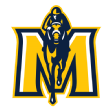
34. Matt McMahon, Murray State Racers-- -- McMahon was a four-year letterwinner as a guard at Appalachian State, averaging 5.8 points and collecting 135 3-pointers in his Mountaineers career (1996-2000). McMahon played on a 1999-2000 App State team that reached the NCAA tournament under coach Buzz Peterson.

33. Russell Turner, UC Irvine Anteaters -- Turner was a two-time All-American at Division III Hampden-Sydney, establishing a school record with 2,272 points and leading the school to the first two NCAA tournament appearances in its history. Turner was inducted into the Hampden-Sydney Hall of Fame in 2002.
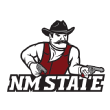
32. Chris Jans, New Mexico State Aggies -- Jans was a three-year starter and prolific scorer at Division III Loras College in Dubuque, Iowa, between 1987 and 1991, averaging 28.3 points per game and making a school-record 133 3-pointers during his senior season. During Jans' college career, the Duhawks broke 16 scoring records and two D-III records for 3-point shooting.

31. Mike Rhoades, VCU Rams -- Rhoades didn't just play Division III basketball, he was the best player in Division III, winning national player of the year honors in 1995 and two All America citations at Lebanon Valley (Pennsylvania) College. The shooting guard -- who also led the team to a national title in 1994 -- holds school records for points, assists, steals and free throw percentage, and his jersey was retired by the school.
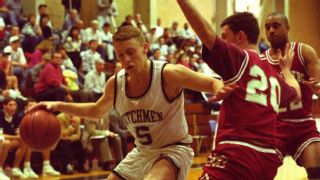

30. Ritchie McKay, Liberty Flames -- McKay was a good player at the Division II level, graduating as Seattle Pacific's single-season and career record holder for steals. McKay also left the school ranked No. 3 on its all-time assists list.
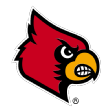
29. Chris Mack, Louisville Cardinals -- Mack was a starter for his first two seasons at Evansville (1988-90), transferring in part due to an incident in which then-coach Jim Crews ordered him to fire the ball into the face of Dayton center Wes Coffee on an inbounds play. (Mack sent Coffee a letter of apology, and Crews later admitted he ordered the code red.) After arriving at Xavier in 1991, Mack tore his left ACL eight seconds into the team's first exhibition, missing the season, and tore his right ACL the summer before the 1992-93 season. He recovered to appear in 21 games (including two in the NCAA tournament) in 1992-93 under Pete Gillen.

28. Mike Krzyzewski, Duke Blue Devils -- Coach K scored 426 points in three seasons as a point guard for Bob Knight at Army (1966-69), and was a starter and co-captain on the 1968-69 team that reached the NIT semifinals.

27. Ron Hunter, Georgia State Panthers -- Hunter averaged 6.3 points per game during a four-year playing career at Miami (Ohio) from 1982 to 1986, playing alongside future NBA player Ron Harper. Hunter appeared in three NCAA tournaments as a player, not advancing past the first round but facing luminaries including Len Bias (Maryland), Jon Koncak (SMU) and Jeff Hornacek (Iowa State) on the court.

26. Jay Wright, Villanova Wildcats -- Wright played three seasons at Bucknell (1980-83), emerging as the Bison's leading scorer as a junior but serving as a role player for the rest of his career with the Bison.

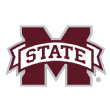
25. Ben Howland, Mississippi State Bulldogs -- Howland transferred to Weber State from Santa Barbara City College, starting 39 games over two seasons (1977-79) and leading the Wildcats to back-to-back Big Sky titles and NCAA tournament appearances. Howland, who averaged nine points and three assists per game with Weber, played professionally in Uruguay for one season.

24. Fran McCaffery, Iowa Hawkeyes -- McCaffery started his career in the ACC, averaging 5.3 points as a freshman at Wake Forest (1977-78) before transferring to Penn for his final three collegiate seasons. As a senior (1981-82), McCaffery dished out 105 assists for a Quakers team that reached the NCAA tournament.

23. Bill Self, Kansas Jayhawks -- Self played at Oklahoma State from 1981 to 1985, starting at point guard over his final two seasons in Stillwater. Self also played in the NCAA tournament as a sophomore at OSU.

22. Travis DeCuire, Montana Grizzlies -- DeCuire started his career at Chaminade (1989-90) but transferred to Montana (1991-94) for his final three seasons, becoming the school's all-time assists leader. DeCuire was an all-Big Sky pick in his final two seasons in Missoula.

21. Mike Hopkins, Washington Huskies -- Hopkins averaged 5.7 points and 2.8 rebounds per game over a four-year career at Syracuse (1989-93), appearing in 111 games during his time with the Orange. After graduating from Syracuse, Hopkins played professionally in both the CBA and Europe.
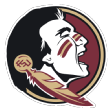
20. Leonard Hamilton, Florida State Seminoles -- Hamilton was a star at UT Martin (1969-71), graduating with the school record in assists while averaging 11.7 points per game and being named to the all-conference first team as a senior. Hamilton, a UTM Hall of Famer, was the first black athlete in the history of the university.
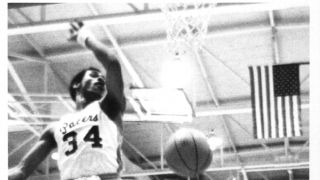

19. LeVelle Moton, North Carolina Central Eagles -- Moton was a star at NCCU from 1992 to 1996, finishing his career ranked third on the school's all-time scoring list and fifth in assists. He was the 1996 CIAA player of the year during the Eagles' Division II era and led the team to the D-II NCAA tournament twice. From there, Moton played four years professionally in Indonesia and Israel.

18. Jeff Jones, Old Dominion Monarchs -- Jones played for four seasons at guard under Terry Holland at the University of Virginia (1978-82), averaging 6.6 points and 4.6 assists for his career and playing in the NCAA tournament twice. Jones is one of six coaches in this tournament with Final Four playing experience -- he scored 11 points and dished out five assists in the Cavaliers' national semifinal loss to North Carolina in 1981.
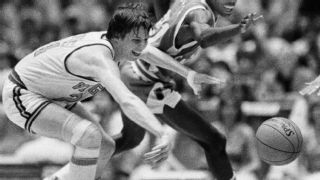

17. Matt Painter, Purdue Boilermakers -- Painter was a four-year letterman at Purdue (1989-93), playing on three NCAA tournament teams and becoming a full-time starter as a senior. Painter was an honorable mention All-Big Ten choice in 1992-93, when he averaged 8.6 points and 4.5 assists per game.
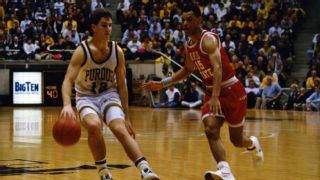

16. Fran Dunphy, Temple Owls -- Dunphy played three seasons for Tom Gola at La Salle (1967-70), including his junior year in which the Explorers went 23-1 but were banned from the postseason. As a senior, Dunphy averaged 18.6 points per game and led the Explorers in assists.
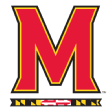
15. Mark Turgeon, Maryland Terrapins -- Turgeon played point guard for four years under Larry Brown at Kansas (1983-87), was named captain in his final two years in Lawrence and became the first player in team history to play in four straight NCAA tournaments. Turgeon is one of six coaches in this tournament with Final Four playing experience, having dished out five assists in a 1986 national semifinal loss to Duke.

14. Byron Smith, Prairie View A&M Panthers -- Smith played at Northwestern State (1987-88), Tyler (Texas) Junior College (1988-89) and finally at Houston (1989-91), where he averaged 17 points per game, was a two-time all-Southwest Conference player, and appeared in the 1990 NCAA tournament. Following his collegiate days, Smith played professional basketball for six seasons in Australia, Turkey and Greece.

13. Jim Boeheim, Syracuse Orange -- Boeheim played three seasons at Syracuse (1963-66), coming off the bench his first two seasons before becoming a starter as a senior. He averaged 14.6 points and 3.1 assists during the 1965-66 campaign, leading the Orange to the Elite Eight. Boeheim went on to play professionally with the Scranton Miners of the ABL.

12. Matt Langel, Colgate Raiders -- Langel was a very good player on some quality teams at Penn (1996-2000), starting on a pair of NCAA tournament squads under Fran Dunphy and earning All-Ivy first-team honors as a senior. Langel went to rookie camp with the NBA Seattle SuperSonics and was on the Philadelphia 76ers' pre-Summer League squad, also playing for a range of teams in Europe before beginning his coaching career.
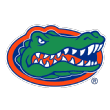
11. Mike White, Florida Gators -- White was a four-year starter at point guard for Ole Miss (1995-99), leading the Rebels to three NCAA tournament appearances and graduating in the top 10 on the school's all-time assists list. After his collegiate career concluded, White played professionally in the short-lived International Basketball League, as well as in England.
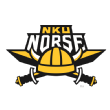
10. John Brannen, Northern Kentucky Norse -- Brannen was an excellent player at Morehead State (1992-94), and then at Marshall (1995-97), averaging a Southern Conference-best 20.9 points as a senior forward and earning all-conference first-team honors in the process. Brannen played professionally for two seasons in Belgium after his collegiate career concluded.

9. Travis Ford, Saint Louis Billikens -- Ford started his collegiate career as a point guard at Missouri (1989-90) before transferring to Kentucky, where he would become an all-SEC player and help UK reach the Final Four in 1993. Ford made a blistering 101 of 191 (52.9 percent) of his 3-pointers during his junior year, led the SEC in assists as a senior, and was top 10 in the country in free throw percentage for each of his final two seasons. Ford went to training camp with the Golden State Warriors but did not make the team.


8. Tony Benford, LSU Tigers -- Benford played four seasons as a guard at Texas Tech (1982-86), and was an All-Southwest Conference pick and the leading scorer on the 1985-86 team that won the SWC tournament and reached the NCAA tournament. Benford, who was the SWC tourney MVP in 1986, was a fourth-round pick of the Boston Celtics in the 1986 NBA draft (the draft class that also included Len Bias). Benford also spent preseason time with the Chicago Bulls, and later played professionally in the Netherlands.

7. Brian Wardle, Bradley Braves -- Wardle was a standout under Mike Deane and Tom Crean at Marquette, averaging double figures in scoring for all four of his seasons (1997-2001), including 18.8 in his senior season of 2000-01 -- though he never reached the NCAA tournament as a player. Wardle played professionally for two seasons in the NBA D-League and the CBA before beginning his coaching career.


6. Steve Wojciechowski, Marquette Golden Eagles -- Wojo was a star over the final two seasons of his playing career at Duke (1994-98), earning All-ACC accolades twice, as well as honorable mention Associated Press All-America status and national defensive player of the year billing as a senior. The Baltimore-area native, who made 88 starts for the Blue Devils, played professionally in Poland for a brief stint following his college career.
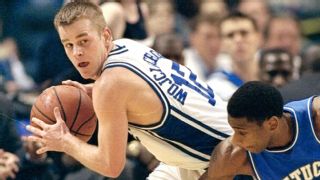

5. Lon Kruger, Oklahoma Sooners -- Kruger was a two-time Big Eight player of the year as a point guard at Kansas State (1973 and 1974) and led the Wildcats to a pair of NCAA tournament appearances during his collegiate career. He was a ninth-round pick of the Atlanta Hawks in the NBA draft (Kruger also tried out with the Detroit Pistons) and played professionally in Israel. He also played a season of minor league baseball in the St. Louis Cardinals organization and was invited to training camp with the Dallas Cowboys as a quarterback.
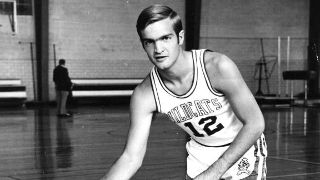

4. Tony Bennett, Virginia Cavaliers -- While playing for his father Dick at Green Bay, Bennett was a two-time player of the year in the Mid-Continent Conference (now the Summit League), leading the Phoenix to three postseason berths while graduating as the conference's leader in points and assists. Bennett played 152 NBA games as a backup guard with the Charlotte Hornets, before injuries hastened the end of his career.
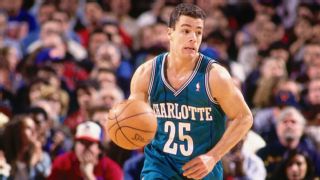

3. Bobby Hurley, Arizona State Sun Devils -- Hurley was a decorated player at Duke, a two-time All-American who reached three Final Fours, won two national titles and was named the Most Outstanding Player of the 1992 Final Four. Hurley remains the all-time assists leader in NCAA history, with 1,076 over his four seasons in Durham. Hurley was the No. 7 overall pick by the Sacramento Kings in the 1993 NBA draft, but his pro career was set back by a serious car accident just 19 games into his rookie season. Hurley averaged 3.8 points and 3.3 assists over parts of five NBA seasons.


2. Johnny Dawkins, UCF Knights -- Dawkins graduated as Duke's all-time leading scorer, capping off a remarkable career by winning Naismith National Player of the Year honors for a 1985-86 team that reached the national title game. Dawkins averaged 11.1 points and 5.5 assists per game over a nine-year NBA career (1986-95), with his best seasons coming with the Charles Barkley-era Philadelphia 76ers.
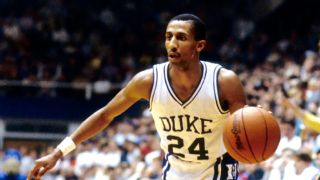

1. Chris Mullin, St. John's Red Storm -- A member of both the Naismith Memorial and College Basketball Halls of Fame, Mullin was a five-time NBA All-Star and a member of the legendary "Dream Team" that took gold at the 1992 Olympics. Mullin, who became a permanent St. John's legend when he led the Johnnies to the 1985 Final Four, averaged 18.2 points per game over his 16-year NBA career (1985-2001).
